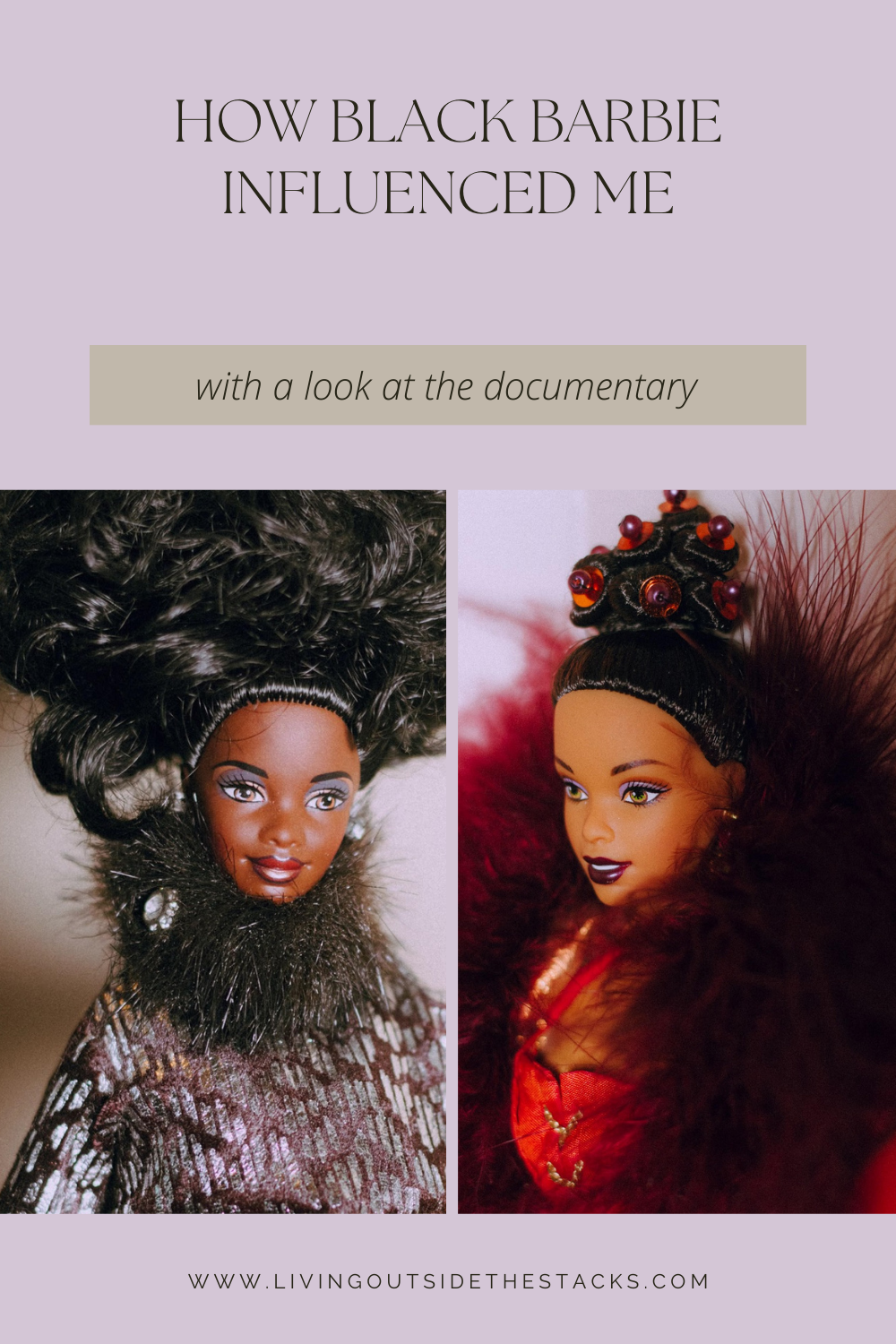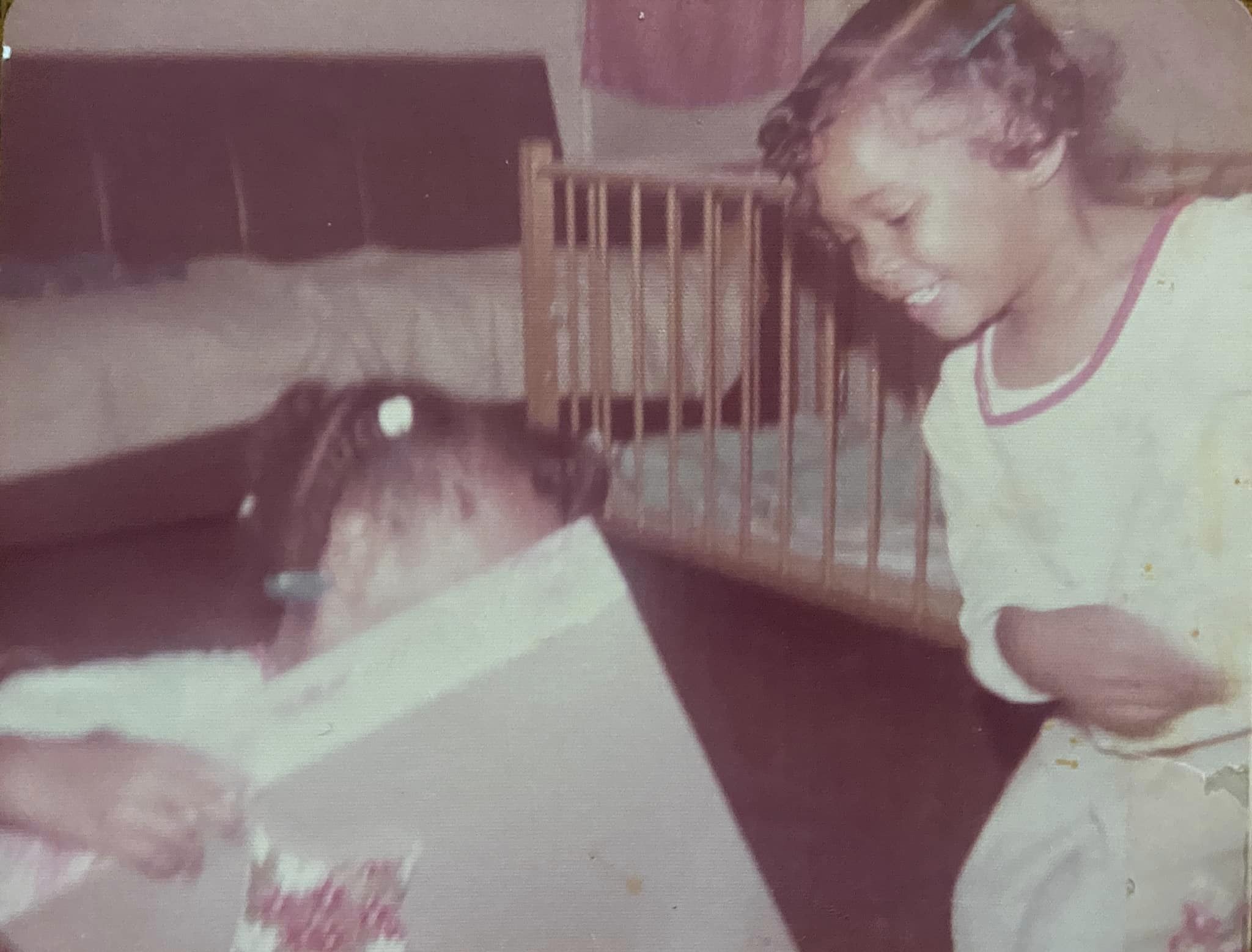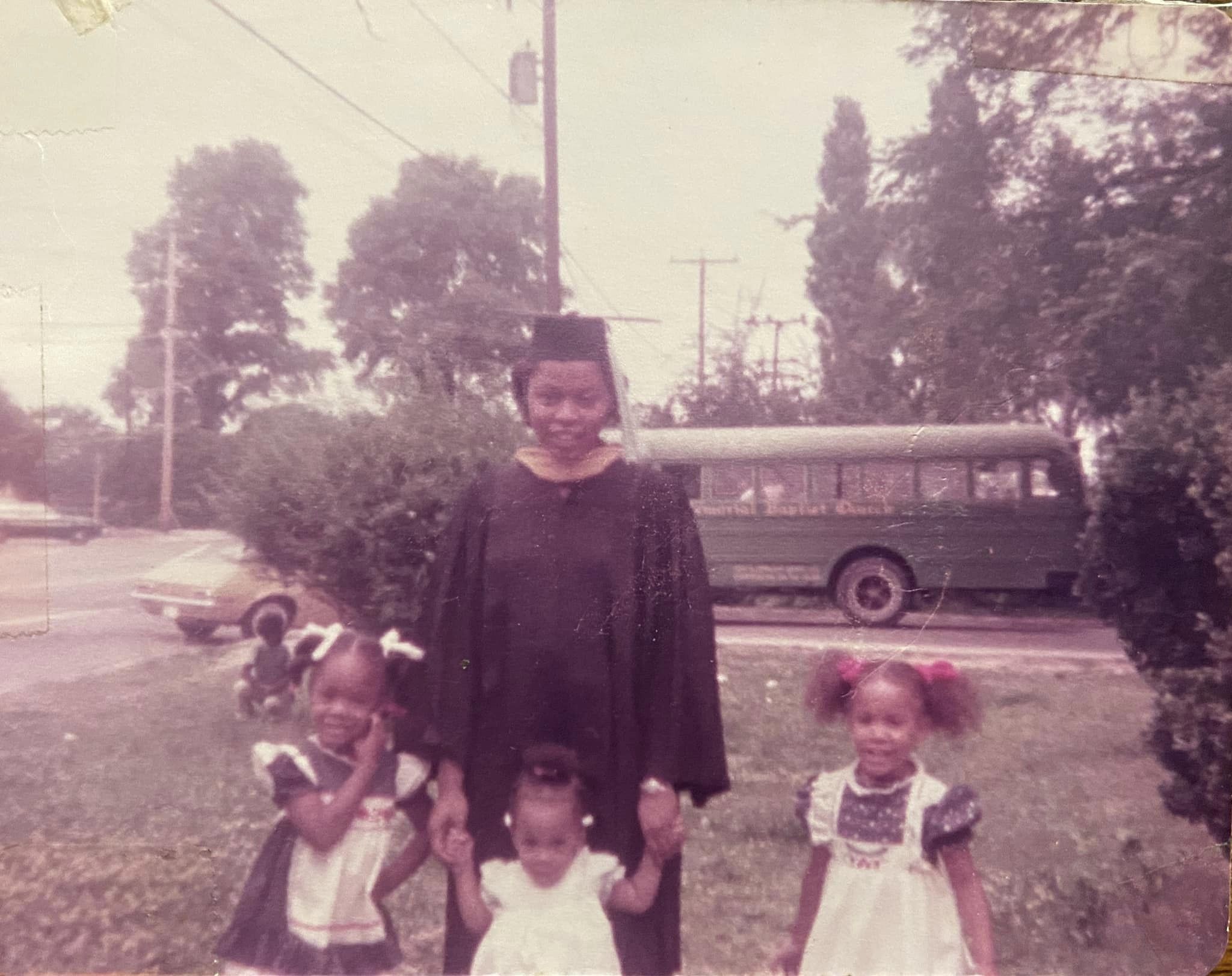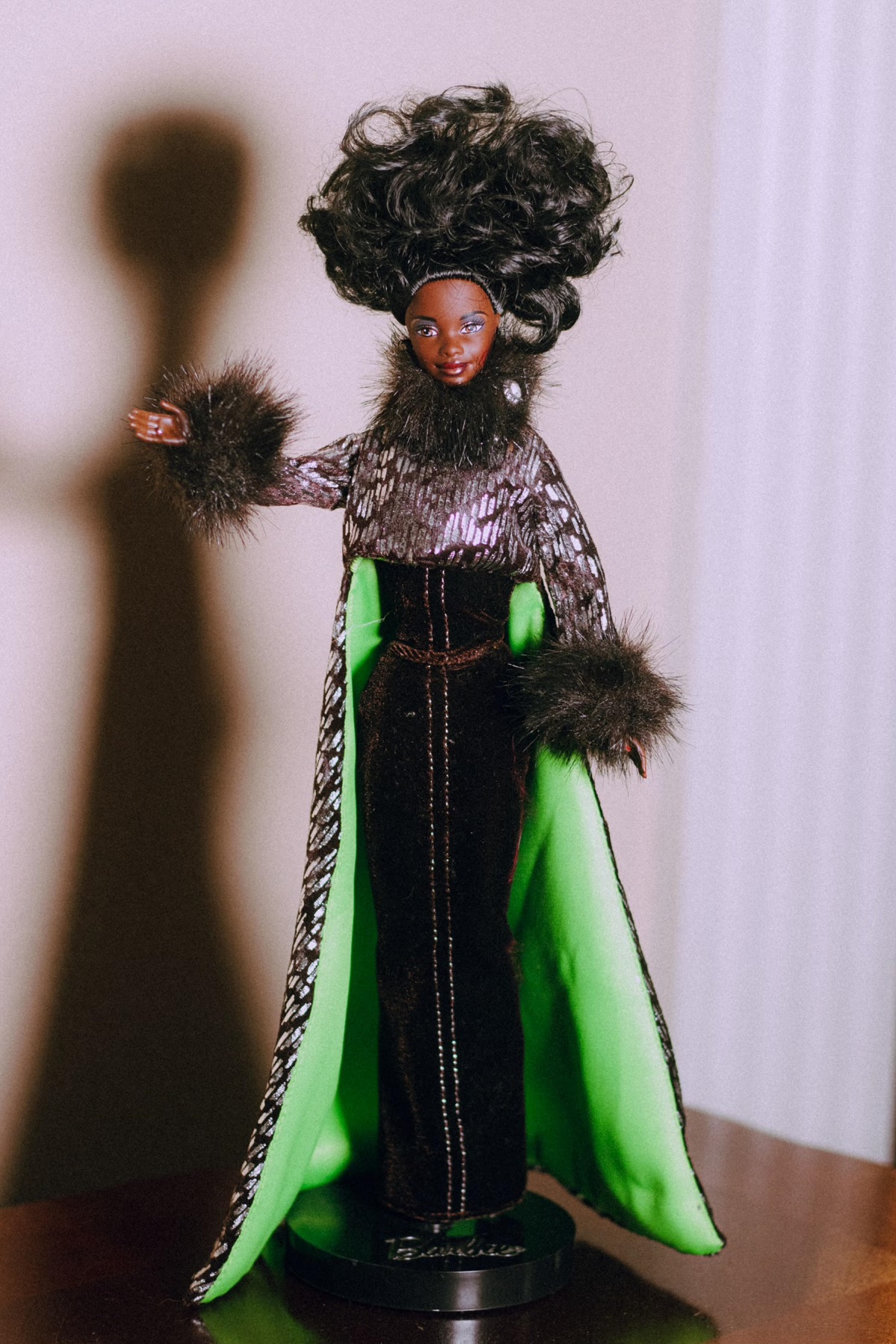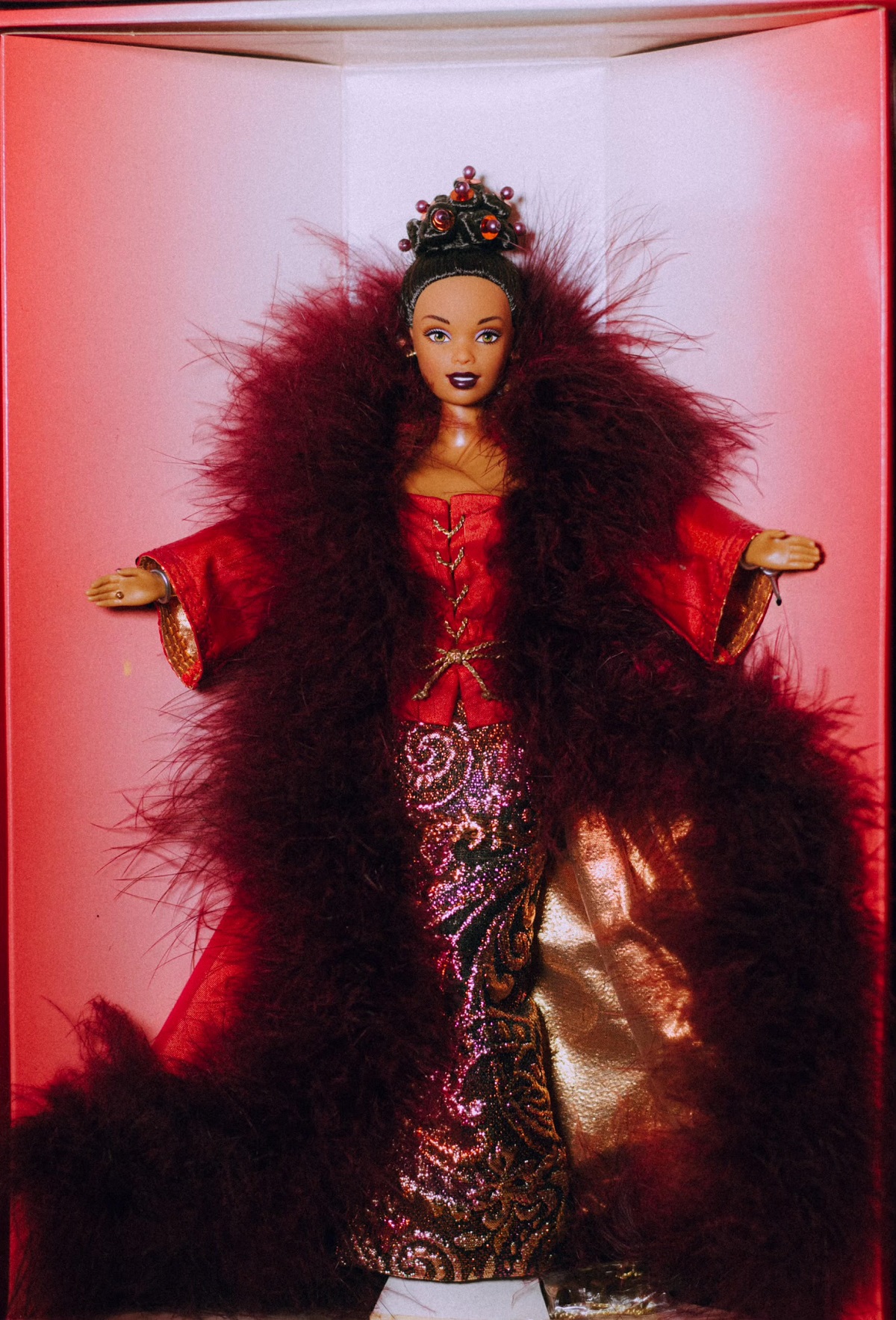While I’ve discussed my grandmother’s influence on my love of coffee and my aunt Phyllis providing one of my first dolls, as well as my aunt Cissy taking me to the doll museum, I don’t believe I’ve ever written about how I felt my aunt Carolyn served as the inspiration for the first Black Barbie. Nor have I shared the profound impact of owning a Black Barbie. In honor of the documentary Black Barbie: A Documentary. I’m excited to share this story.
Although I can’t remember exactly when I received my first Barbie doll, I do remember that she was white. In fact, the details of her appearance and attire have faded from my memory over time. She was simply a Barbie – an iconic toy from my childhood.
I do, however, remember when I received my first Black Barbie.
It was Christmas morning, and I was about 7 or 8 years old. As I tore off the wrapping paper, I gasped – there was a Black Barbie doll, her short Afro framed a Mahogany face, her body enveloped in a sparkly red dress with a gold collar. I had never seen anything so glamorous, except perhaps my fashionable aunt.
My aunt, Carolyn, with my sisters and me. I don’t have a copy of THE picture, so this’ll have to do.
Earlier that year, my aunt Carolyn, stationed with the Army in Japan, sent my mom a photo of herself dressed up to go out for the night. Though I no longer have the photo, the image is seared in my memory – a fitted, deep blue one-shouldered dress, black pumps, perfectly arched brows framing eyes rimmed in charcoal liner and blue shadow, and a broad smile accentuated by dark red lipstick. She looked fly. I thought she was the epitome of style and I just knew I was going to grow up and have that same flare.
TBH, though, all of my dad’s sisters were stylish. You can read about my other aunts and their love for dolls here and here. Yes, it’s hereditary. LOL
When I unwrapped the gift and saw Black Barbie, I was convinced that my aunt had been the model. Even now, at 51 years old, I refuse to believe any differently.
Black Barbie’s Influence on Me
Black Barbie was the most glamorous doll I’d ever seen. Black or white.
As a child, I watched in awe as Black Barbie, the epitome of glamour, proudly sported her natural afro. For too long, Black women had been told that their unprocessed hair was unprofessional and unfashionable. Yet, here was the quintessential fashion icon, rocking her short, curly tresses with confidence. Seeing this representation was eye-opening for me, a young girl whose own natural hair was meticulously styled by my mother. Barbie’s unapologetic embrace of her roots later gave me the courage to do the same, proving that I too could look fabulous while celebrating my natural beauty.
Limelight Barbie by Byron Lars
Cinnabar Sensation by Byron Lars
“Dark-skinned girls shouldn’t wear bright colors, especially not red.” I cannot count the number of times I heard that growing up. It pissed me off. I always thought brown-skinned girls looked stunning in colors — the brighter the better. And Black Barbie proved it.
I vividly remember sitting cross-legged on the floor, running my fingers across the sparkly red dress. I was captivated by the gleaming gold collar, thinking I had never seen anything so breathtakingly beautiful. The vibrant crimson hue stood out against Barbie’s warm, chocolate-brown skin. In that moment, I knew I would always embrace the power of color. And one day, if I had children of my own, no matter their complexion, I would dress them in the most vibrant, joyful colors I could find.
Owning a Black Barbie doll instilled a profound sense of pride and self-affirmation, a powerful message that the standard white Barbie could never convey. It celebrated the inherent beauty and glamour of Black women, for which I am forever grateful to designer Kitty Black Perkins, Mattel workers Beulah Mae Mitchell and Stacey McBride-Irby, and the countless other Black women who inspired Black Barbie.
A Special Thank You
I need to give a special thank you to my kid, Symone, for taking the amazing Barbie pictures for this post. These two dolls now live with her and served as the inspiration for her latest photo shoot, which you can see here and here.
About Black Barbie: A Documentary
Our documentary celebrates the momentous impact three Black women at Mattel had on the evolution of the Barbie brand as we know it. Through these charismatic insiders’ stories, the documentary tells the story of how the first Black Barbie came to be in 1980, examining the importance of representation and how dolls can be crucial to the formation of identity and imagination.
MY THOUGHTS
For years, I’ve known about Kitty Black Perkins, the designer of Black Barbie. However, I was unaware of Beulah Mae Mitchell and Stacey McBride-Irby, and the integral roles they played in Mattel’s creation of Black Barbie. The documentary explores their stories, as well as those of contemporary actresses, models, mothers, and their daughters, to examine the impact of Barbie, especially Black Barbie, on their lives and the importance of representation.
Documentarian Lagueria Davis was unaware of her family’s role in the creation of Black Barbie, which she discovered while producing the documentary – learning her own family’s legacy and the history of Black Barbie alongside the viewer. Her aunt, Beulah Mae Mitchell, was a long-time Mattel employee and avid doll collector. Hearing Ms. Mitchell’s insights on her relationship with Mattel co-founder and Barbie creator, Ruth Handler, was fascinating. According to the documentary, Ms. Handler asked several employees what Mattel could do to make the company better and Ms. Mitchell and Ms. McBride-Irby responded something to the effect “We want a Black Barbie.”
If you get the chance to watch the documentary, I hope you do so. It’s worth the watch and would make for an interesting discussion for people interested in history and pop culture.
THANK YOU
Thank you for stopping by my blog. I hope you enjoyed this post and learned something new. If you like what you read, please consider sharing this post on Facebook or Twitter. You can also share on Pinterest. While I pay for many of the items I share on this blog out of my own pocket, some items are gifted to me {I always disclose those items}.
Affiliate Information
Reading and reviewing books brings me a great deal of happiness. If you’re a reader, I’d love for you to visit my online bookstore, Living Outside the Stacks, to make your purchase. If you purchase from my shop, I’ll receive a small commission, but you’ll also support indie bookstores. If you need help staying organized, but want to keep it pretty, I invite you to give Artful Agenda a try. It’s a digital planner inspired by paper planners. Use my code: RD1028912.
Come back soon,
LET’S CONNECT

